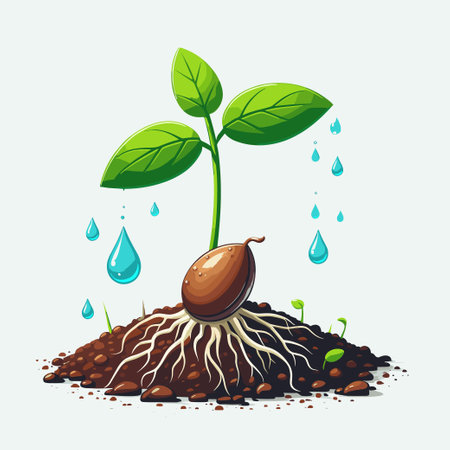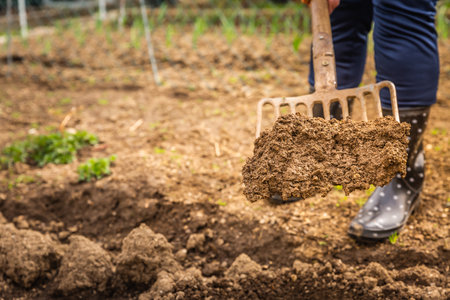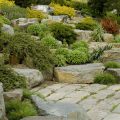Understanding Grow Lights and How They Work
Indoor gardening has become more popular than ever, especially as people look for ways to grow fresh herbs, vegetables, and decorative plants year-round. One of the most important tools for successful indoor gardening is the grow light. But what exactly are grow lights, and how do they work? Let’s break it down in a simple and easy-to-understand way.
What Are Grow Lights?
Grow lights are artificial light sources designed to support plant growth by mimicking natural sunlight. Since indoor environments often lack sufficient sunlight, grow lights fill in the gap by providing the specific types of light plants need to photosynthesize and thrive.
How Grow Lights Mimic Sunlight
Sunlight contains a full spectrum of light wavelengths, including those that are most useful for plant growth—primarily blue and red light. Grow lights are engineered to produce these wavelengths so that your plants can still carry out photosynthesis even when grown indoors.
The Importance of Light Spectrum
Plants use different parts of the light spectrum during various stages of growth:
- Blue light (400–500 nm): Encourages vegetative growth like leafy greens and strong stems.
- Red light (600–700 nm): Supports flowering and fruiting stages.
- Full-spectrum light: Includes all visible wavelengths and is suitable for all stages of plant growth.
Types of Grow Light Technologies
There are several types of grow lights on the market today, each with its own advantages and best-use scenarios. Here’s a quick comparison:
| Type | Description | Best For | Pros | Cons |
|---|---|---|---|---|
| LED (Light Emitting Diode) | Energy-efficient lights available in various spectrums | All-purpose indoor gardening | Low heat output, long lifespan, customizable spectrum | Higher upfront cost |
| Fluorescent (CFL & T5) | Tubular or spiral bulbs used for low-light needs | Seedlings, herbs, small plants | Affordable, cool running temperature | Shorter lifespan, less intense light output |
| HID (High-Intensity Discharge) | Powers large-scale grows with high-intensity light | Larger fruiting plants or grow rooms | Very bright, effective for large setups | Runs hot, consumes more energy, requires ballast |
Choosing the Right Grow Light
The right type of grow light depends on your plant type, space size, and budget. For beginners or small home gardeners, LED or fluorescent options are usually the most practical choice due to their ease of use and safety.
This foundational knowledge will help you better understand which grow light setup fits your indoor garden goals as we explore further topics in this guide.
2. Types of Grow Lights: Pros and Cons
When it comes to indoor gardening in American homes, choosing the right grow light can make all the difference. There are four main types of grow lights—LED, fluorescent, HID (High-Intensity Discharge), and incandescent. Each type has its own strengths and weaknesses when it comes to energy efficiency, heat output, lifespan, and best use cases. Let’s break them down so you can find the best fit for your indoor garden.
LED Grow Lights
LED (Light Emitting Diode) grow lights are one of the most popular choices among home gardeners today. They’re known for being energy-efficient and long-lasting.
Pros:
- Very energy-efficient—uses less electricity compared to other types
- Long lifespan—can last up to 50,000 hours or more
- Low heat output—safe to place close to plants
- Available in full-spectrum options for all growth stages
Cons:
- Higher upfront cost compared to other lights
- Quality varies—cheaper models may not perform well
Fluorescent Grow Lights
Fluorescent lights are a great choice for beginners or small-scale growers. They come in two main types: T5 (most common for gardening) and CFL (compact fluorescent lamp).
Pros:
- Affordable and easy to find in stores across the U.S.
- Low heat output—good for delicate seedlings
- Energy-efficient (though not as much as LEDs)
Cons:
- Shorter lifespan than LEDs—typically around 10,000–20,000 hours
- Larger setups may require multiple bulbs and fixtures
HID Grow Lights (High-Intensity Discharge)
HID lights include Metal Halide (MH) and High Pressure Sodium (HPS) bulbs. These are powerful lights commonly used by experienced indoor gardeners or commercial growers.
Pros:
- Very bright—great for high-light plants like tomatoes or cannabis
- Proven results in large-scale growing environments
Cons:
- High heat output—requires proper ventilation or cooling systems
- Larger energy consumption than LED or fluorescent lights
- Bulbs need regular replacement—lifespan is usually under 10,000 hours
Incandescent Grow Lights
Incandescent bulbs are the least recommended option for serious indoor gardening. While they’re inexpensive and easy to find, they fall short in several key areas.
Pros:
- Low initial cost—available at most hardware stores in the U.S.
- Simple to use with standard light sockets
Cons:
- Poor energy efficiency—high electricity usage for low light output
- Very short lifespan—usually under 1,000 hours
- Excessive heat production can harm plants if placed too close
Comparison Table: Grow Light Types at a Glance
| Type | Energy Efficiency | Heat Output | Lifespan (Approx.) | Best For |
|---|---|---|---|---|
| LED | Excellent | Low | 50,000+ hours | All-purpose indoor gardening; full-spectrum growing year-round |
| Fluorescent (T5/CFL) | Good | Low to Medium | 10,000–20,000 hours | Seedlings, herbs, leafy greens in small spaces or apartments |
| HID (MH/HPS) | Poor to Moderate | High | <10,000 hours | Larger grow rooms; fruiting and flowering plants needing intense light |
| Incandescent | Poor | Very High | <1,000 hours | Tiny projects only; not suitable for serious gardening use |
Selecting the right grow light depends on your plant types, available space, budget, and how hands-on you want to be with your setup. Whether youre growing fresh herbs on a kitchen counter or setting up a full indoor vegetable garden in your basement, theres a grow light that fits your needs.

3. Choosing the Right Grow Light for Your Indoor Garden
Finding the perfect grow light for your indoor garden doesnt have to be overwhelming. Whether youre growing a few herbs on your kitchen counter or running a full-sized grow tent, choosing the right light depends on several key factors: the type of plants youre growing, the size of your space, your budget, and your overall gardening goals.
Plant Types and Light Needs
Different plants have different light requirements. Heres a quick guide to help you understand what kind of light intensity and spectrum your plants may need:
| Plant Type | Light Intensity | Recommended Spectrum |
|---|---|---|
| Leafy Greens (lettuce, spinach) | Low to Medium | Cool White / Full-Spectrum |
| Herbs (basil, mint, parsley) | Medium | Full-Spectrum with Blue Emphasis |
| Fruiting Plants (tomatoes, peppers) | High | Full-Spectrum with Red Boost during flowering |
| Flowering Plants (orchids, African violets) | Medium to High | Full-Spectrum or Warm White with Red Boost |
Grow Space Size and Light Coverage
The size of your grow area plays a big role in determining how powerful your light needs to be. Smaller spaces like shelves or countertops can use compact LED panels or strip lights, while larger areas like grow tents may require high-output LEDs or multiple fixtures.
Quick Reference Table for Light Coverage
| Grow Area Size | Recommended Light Type | Covers Approx. |
|---|---|---|
| 1–2 sq ft (e.g., windowsill or small shelf) | LED Grow Bulb or Small Panel Light | 1–2 plants |
| 2–4 sq ft (e.g., kitchen counter) | T5 Fluorescent or Medium LED Panel | 3–6 plants |
| 4–8 sq ft (small tent or closet) | High-Power LED Panel or HID System | 6–12 plants+ |
| Larger than 8 sq ft (full grow tent) | Multiple LED Panels or Commercial Systems | 12+ plants |
Your Budget Matters Too!
You don’t need to break the bank to get started with indoor gardening. There are good grow lights available at every price point:
- $ – Budget-Friendly: CFLs and small LED bulbs are great for beginners growing herbs or leafy greens.
- $$ – Mid-Range: T5 fluorescent tubes and mid-sized LED panels offer better coverage and efficiency.
- $$$ – Premium: High-end full-spectrum LEDs and HID systems provide maximum output for serious growers with large setups.
Your Gardening Goals Shape Your Choice
If youre just looking to keep a few herbs fresh all year round, a simple setup will do. But if youre planning to grow tomatoes indoors through all stages — from seedling to harvest — youll need a more advanced lighting system that allows you to adjust light intensity and spectrum as needed.
A Few Quick Tips:
- If you’re growing year-round, choose energy-efficient LEDs to save on electricity.
- If heat is an issue in your space, avoid HID lights which run hot.
- If you’re starting seeds, look for lights with strong blue spectrum output to support healthy root development.
Selecting the right grow light comes down to balancing what your plants need with what works best for your space and budget. Take your time comparing options, and don’t be afraid to start small — you can always upgrade as your indoor garden grows!
4. Setting Up Grow Lights: Placement, Timing, and Safety Tips
Setting up your grow lights correctly is just as important as choosing the right type of light. Proper placement ensures your plants get the light they need without getting damaged, while using timers and following safety precautions can make indoor gardening easier and more effective.
How Far Should Grow Lights Be from Your Plants?
The distance between your grow lights and your plants depends on the type of light you’re using. Too close, and you risk burning the leaves; too far, and your plants may stretch or become leggy due to insufficient light. Here’s a quick guide:
| Type of Grow Light | Recommended Distance from Plants |
|---|---|
| Fluorescent (T5, CFL) | 6–12 inches |
| LED (Low to Medium Power) | 12–24 inches |
| LED (High Power) | 24–36 inches |
| HID (MH/HPS) | 24–48 inches |
Keep in mind that younger seedlings are more sensitive to intense light, so it’s better to start with the lights a bit farther away and move them closer as the plants grow stronger.
Ideal Lighting Schedules for Different Plants
Just like people, plants have different needs when it comes to how much “daylight” they receive. Using a timer helps keep things consistent. Heres a basic guideline based on plant types:
| Plant Type | Daily Light Duration |
|---|---|
| Leafy Greens (Lettuce, Spinach) | 12–16 hours |
| Vegetables (Tomatoes, Peppers) | 14–18 hours |
| Herbs (Basil, Mint) | 12–16 hours |
| Flowering & Fruiting Plants | 12–16 hours (adjust based on growth stage) |
| Cacti & Succulents | 10–14 hours |
A simple plug-in timer can automate this process so you don’t have to turn the lights on and off manually every day.
Best Practices for Light Placement and Coverage
- Even Coverage: Make sure all parts of your plant canopy are receiving equal light. Use multiple lights or reflective surfaces if needed.
- Avoid Shadows: Rotate your plants every few days if one side is getting more light than the other.
- Vertical Space: Adjustable hanging systems let you raise or lower your lights as your plants grow taller.
- No Obstructions: Keep leaves and objects from blocking the light path to lower parts of the plant.
Safety Tips for Indoor Grow Light Setup
Avoid Overheating:
If youre using HID or high-power LED lights, make sure theres good air circulation around the fixture. Overheating can damage both the light and your plants—and it’s a fire hazard.
Use Quality Fixtures:
Select lighting systems that are UL-listed or certified for indoor use in the U.S. This ensures they meet safety standards.
Cord Management:
Tidy up power cords to prevent tripping hazards or accidental unplugging. Avoid overloading outlets by using surge protectors rated for your system’s wattage.
Avoid Water Contact:
Never let water splash onto electrical components. Keep grow lights away from humidifiers and watering zones unless they are specifically designed to handle moisture.
Troubleshooting Flickering or Buzzing:
- If a bulb flickers or makes noise, turn it off immediately and inspect it for damage or loose connections.
- If unsure, consult with an electrician to make sure your setup is safe.
A properly installed grow light system not only supports healthy plant growth but also keeps your home safe. With correct placement, timing, and attention to safety details, your indoor garden can thrive year-round.
5. Troubleshooting Common Grow Light Issues
Even the best grow light setups can run into problems from time to time. Knowing how to spot and fix these issues early can make a big difference in keeping your indoor garden healthy and thriving. Here are some of the most common grow light problems and how to deal with them.
Plant Stress from Improper Light
If your plants are looking droopy, discolored, or leggy, they might not be getting the right kind of light. Too much light can cause leaf burn, while too little can lead to weak growth. Heres a quick guide:
| Symptom | Possible Cause | Solution |
|---|---|---|
| Yellow or scorched leaves | Too much light or heat | Raise the light or reduce intensity |
| Leggy stems | Not enough light | Lower the light closer to the plant |
| Pale or slow growth | Poor spectrum or insufficient duration | Switch to full-spectrum bulbs and increase hours |
Bulb Burnout or Flickering Lights
If your lights are flickering or have burned out completely, it’s time for a check-up. Most grow lights have a lifespan—LEDs last longer than fluorescent or HID bulbs. Make sure you’re using the right type for your setup and replacing them when needed.
Tips to Prevent Bulb Problems:
- Check manufacturer specs for expected lifespan.
- Avoid turning lights on and off frequently—this wears them out faster.
- Use surge protectors to prevent electrical damage.
Insufficient Light Coverage
If only part of your garden is growing well, you might not be getting even light coverage. Plants at the edges may suffer if your light doesn’t spread far enough.
How to Improve Light Coverage:
- Use reflectors or mylar walls to bounce light back onto plants.
- Add more lights to cover larger areas.
- Rotate plants regularly so each one gets even exposure.
Overheating Issues
Some grow lights, especially older models like HIDs, can get very hot. This extra heat can dry out soil, stress plants, and raise room temperature beyond what’s healthy for indoor gardening.
Ways to Manage Heat:
- Install fans or ventilation systems near your grow area.
- Switch to cooler-running LED grow lights.
- Keep a thermometer nearby and monitor room temperature daily.
Quick Troubleshooting Checklist
| Issue | Check This First | Next Step If Not Fixed |
|---|---|---|
| Dull or slow plant growth | Light spectrum and duration | Add supplemental lighting or switch bulb type |
| Browning leaf tips | Distance from light source | Add ventilation or raise lights higher |
| Lopsided plant growth | Uneven lighting angle/coverage | Reposition lights or rotate plants weekly |
Troubleshooting grow light issues doesnt have to be complicated. By staying observant and making small adjustments as needed, you can ensure your indoor garden stays healthy and productive year-round.


